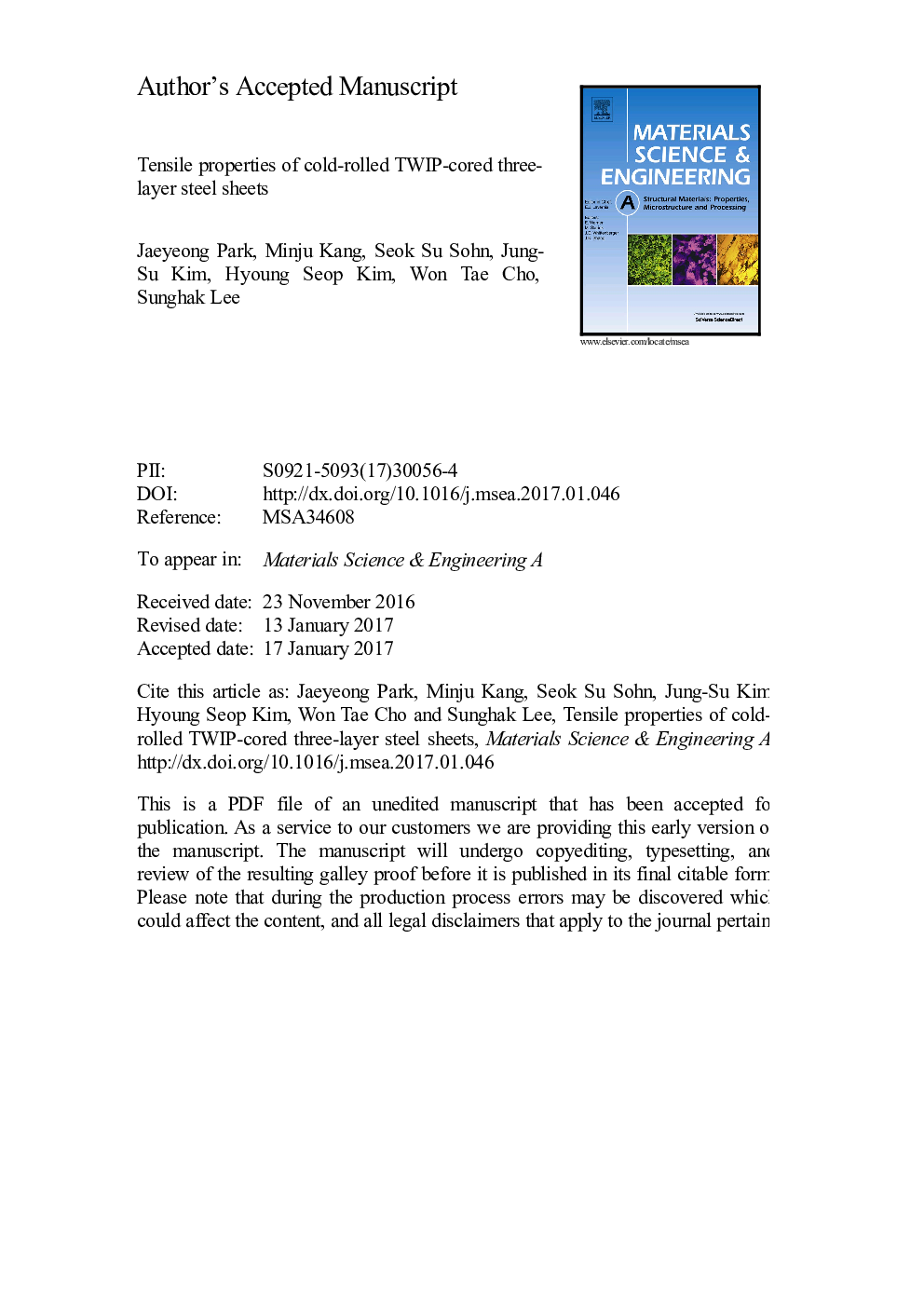| Article ID | Journal | Published Year | Pages | File Type |
|---|---|---|---|---|
| 5456730 | Materials Science and Engineering: A | 2017 | 36 Pages |
Abstract
In this study, TWIP-cored three-layer steel sheets containing thin surface layers of low-carbon (LC) or interstitial-free (IF) steel were fabricated by solid-state hot-roll-bonding followed by cold-rolling. Interfaces were well bonded without any pores or voids, which indicated a successful fabrication of the TWIP-cored sheets. According to the tensile test results, both strength and elongation of TWIP-cored sheets increased proportionally with the volume fraction of TWIP-cored region, and were well matched with strength and elongation calculated by a rule of mixtures. However, yield point (YP) was observed in most of TWIP-cored sheets as well as mono-layer TWIP and LC sheets. After the sheets were quenched from 830 °C, the YP disappeared because the dislocation density was greatly increased by effects of thermal stresses formed during the rapid cooling. A bainitic microstructure, which was generally characterized by the continuous yielding, was formed along TWIP/LC or TWIP/IF interfaces, and also beneficially influenced to the elimination of YP. These TWIP-cored sheets covered a wide range of yield and tensile strength and ductility levels requiring in automotive steel sheets by controlling the volume fraction of TWIP-cored region, and thus present new applications to multi-functional automotive steel sheets.
Related Topics
Physical Sciences and Engineering
Materials Science
Materials Science (General)
Authors
Jaeyeong Park, Minju Kang, Seok Su Sohn, Jung-Su Kim, Hyoung Seop Kim, Won Tae Cho, Sunghak Lee,
